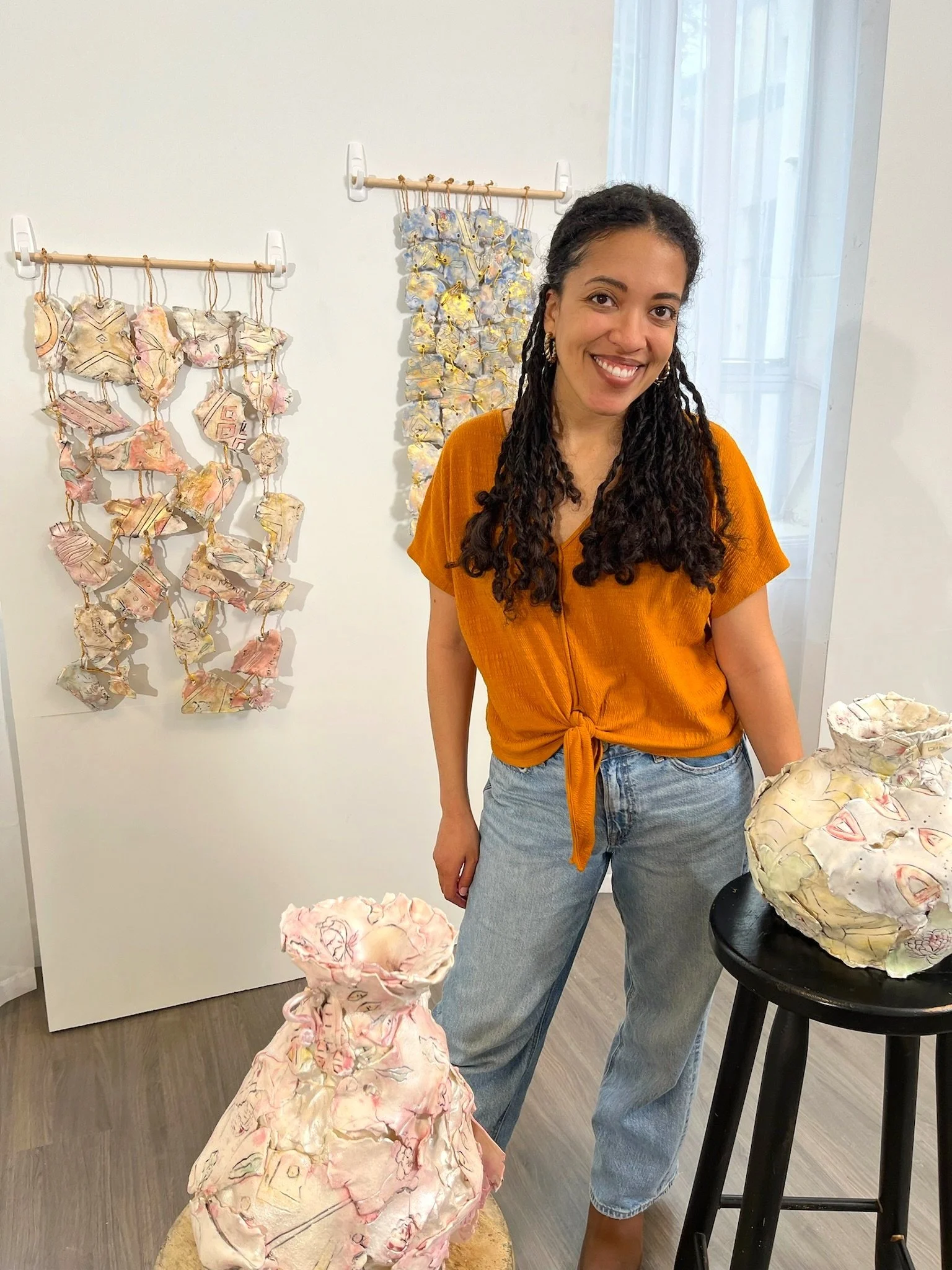about
Marika St. Rose Yeo is a visual artist originally from Treaty 4 Territory, Regina, Saskatchewan. Her artistic practice now takes place on the unceded territory of the Lkwungen peoples, Vancouver Island, BC.
Her artistic works and research are concerned with healing, justice and transformation through creative practice. Marika works primarily using clay as her medium. Her sculptural vessels emphasize vulnerability and fragility through the layers and cracks of the ceramic pieces.
Marika St. Rose Yeo has a BFA with a major in ceramics from the University of Regina and a PhD in Critical and Creative Social Justice Studies from the University of British Columbia. During her PhD research, Marika focused both on her own artistic practice and on the connection that exist between art, justice and transformation.
I work with the form of the vase and the assembling of broken pieces as a process of gathering. In a world marked by separation and grief, I am interested in how our imagination can lead us to a place of transformation, healing and a deeper understanding of our oneness. The clay itself acts as an archive for our memories, our ancestral wisdom, and further, it teaches us how to be malleable and transform through various stages of “becoming”.
The form of the vase carries many symbols but most clearly, it can be given metaphoric characteristics that mirror those of people and personalities alongside providing a place for contemplation of what we “carry” within us.
The designs that pattern the shards I work with reference both ceramic and fabric patterns from my own personal background as I predominately draw from patterns that would have been used in craft practices in the 1800s from West Africa, the Caribbean and Western Europe. Ultimately, I work with the idea that these patterns echo out into our future and become intertwined on the surface of my sculptures — blurring the lines of division between each other and the linear notion of time as solely “past” and “future”.
Break a vase, and the love that reassembles the fragments is stronger than that love which took its symmetry for granted when it was whole. The glue that fits the pieces is the sealing of its original shape. It is such a love that reassembles our African and Asiatic fragments, the cracked heirlooms whose restoration shows its white scars. This gathering of broken pieces is the care and pain of the Antilles, and if the pieces are disparate, ill-fitting, they contain more pain than their original sculpture, those icons and sacred vessels taken for granted in their ancestral places. Antillean art is this restoration of our shattered histories, our shards of vocabulary, our archipelago becoming a synonym for pieces broken off from the original continent.
-Derek Walcott, Nobel Lecture: The Antilles: Fragments of Epic Memory


